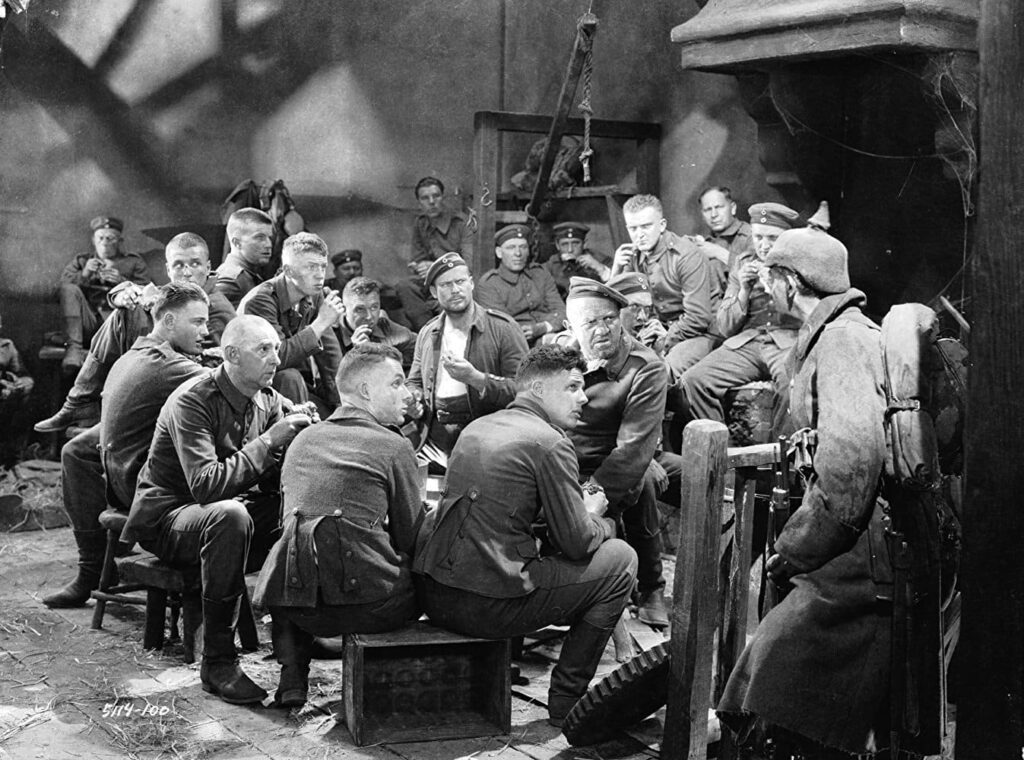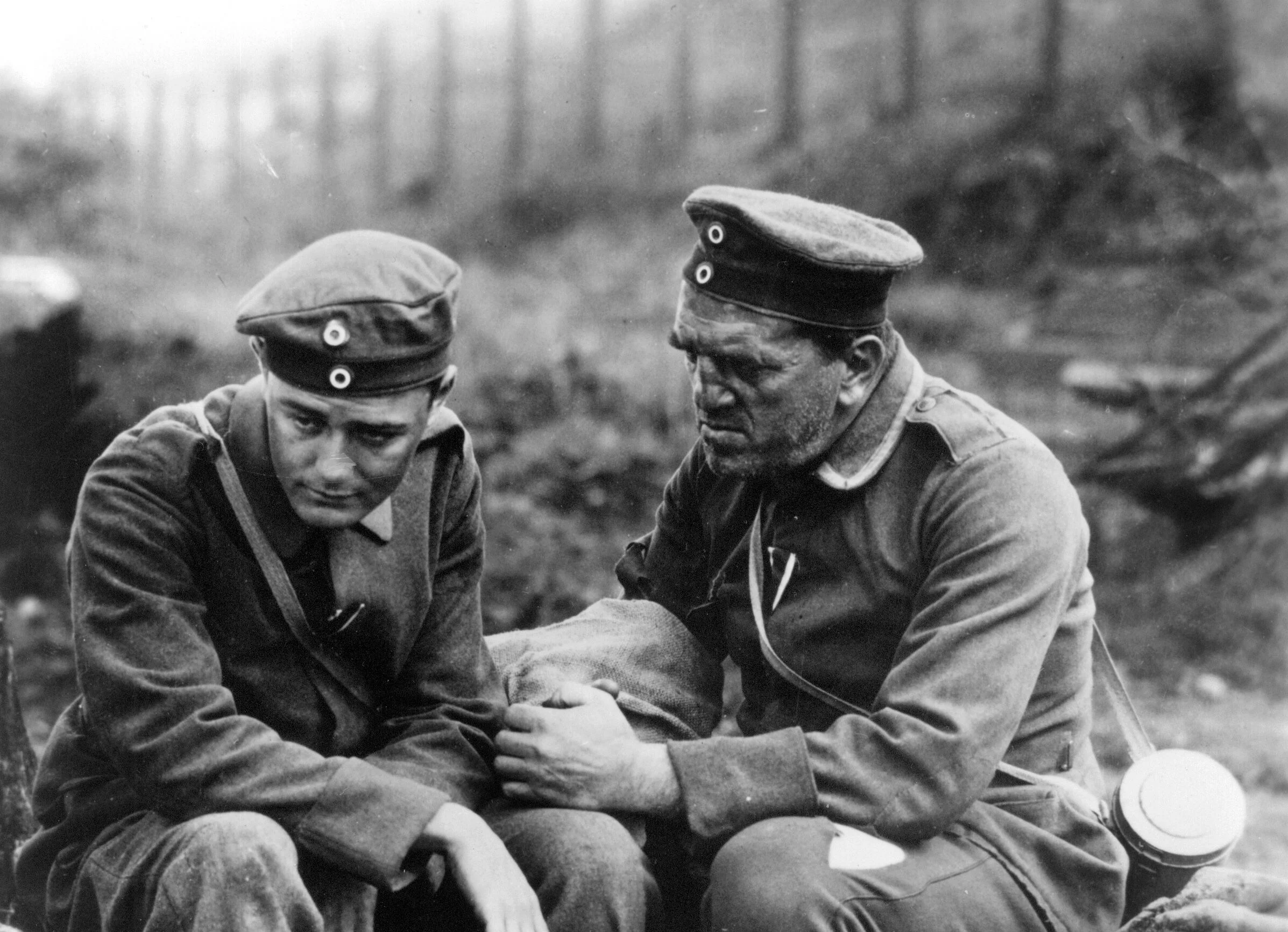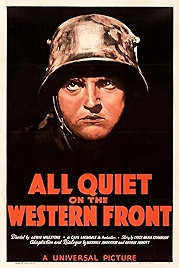If Netflix’s 2022 remake of All Quiet on the Western Front has done anything it’s revived interest in this 1930 original, a film more people have heard about than seen but which has been influential on generations of film-makers. It’s obvious that Kubrick borrowed heavily from it for the trench sequences in Paths of Glory, and Steven Spielberg has acknowledged its influence on Saving Private Ryan.
And what a beast it is, a marvel of technical brilliance, directed with almost insane virtuosity by Lewis Milestone, who’d already made a name for himself by 1930 and would go on to direct for decades to come – he directed the original Ocean’s Eleven in 1960, for instance – but who’d never hit this peak again.
Following a template laid down by films like 1921’s The Four Horsemen of the Apocalypse, Milestone’s movie is the story of shiny idealism being worn away by the dirty reality of war. In a grandstanding opening shot full of marching men in a bustling small German town, he introduces us to his film’s heroes, a gang of schoolboys being urged to volunteer for war by their teacher, a greyhead drunk on notions of patriotism – “how sweet to die for the Fatherland” etc.
Into the training sequence we go in what’s an obvious foreshadowning of Kubrick’s Full Metal Jacket, before the film comes into its own out on the battlefield. This, all these decades later, remains visually and sonically spectacular, Milestone collaging together crane shots and static tableaux, epic glides over the trenches with close-ups of the fighting men, mud and barbed wire, while bombs whine and boom and machine guns chatter.
Two names head the cast. Louis Wolheim as the seasoned soldier with a heart of gold, and Lew Ayres as one of the entitled new volunteers, wet behind the ears but learning fast. Wolheim with his boxer’s face and a gruff manner is excellent and gives the film real depth. He’d be dead within a year, of cancer. Blandly handsome, square-headed, all-American-boy Ayres can’t really compete against him but he stands out against the others of his cohort, who have a tendency towards the “You speak. I listen. I reply” style of acting, all of them using the same vocal cadences. It makes for static drama, the antithesis of what Milestone is trying to achieve in his fluid, varied, forward-leaning action sequences.

It’s an easy watch, largely because so much of it is familiar from almost every war film ever since, from the martinet drill sergeant and the importance of food and tobacco to the rats in the trenches and the soldier who doesn’t realise he’s had his leg amputated.
Doubly so on the restoration done for the Library of Congress in 2006 and which is the basis for almost every release ever since. It is spectacularly good. Sharp as a pin, full of all the grey tones, with the sound unusually full and rich for a film of the era.
War is hell, unsurprisingly, is the message, and the film was banned in many countries as a consequence – the Nazis hated it, but so did the New Zealand censor. Over time opinion shifted and from the 21st-century viewpoint All Quiet on the Western Front looks like part of the emerging critical reappraisal of the Great War. The wasted talent. The lions led by donkeys and so on.
Ayres gets the film’s big speech towards the end, as he revisits his old school, only to find the same old teacher is trying to get yet another intake of pupils to volunteer. War is not “beautiful and sweet” but “dirty and painful” he argues, before heading back to his own 2nd Company, where jug-eared 16-year-olds have now been drafted into to replace his fallen comrades. The boy has become a man and now a new intake will start along the same road.
And so, on to the 2022 remake. It has big boots to fill.
All Quiet on the Western Front – Watch it/buy it at Amazon
I am an Amazon affiliate
© Steve Morrissey 2023

